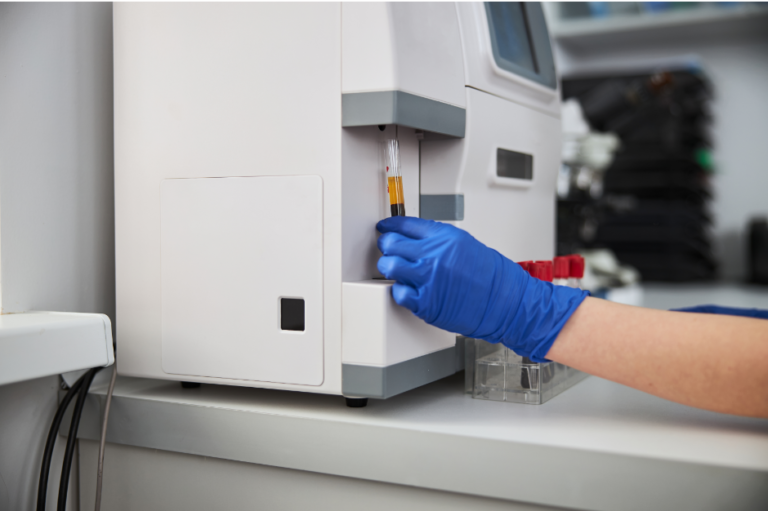
Introduction
The difference between 3-part and 5-part CBC machines is crucial knowledge for modern medical laboratories. Hematology analyzers are essential tools that provide critical data about a patient’s health by analyzing blood samples. Among the various types of hematology analyzers, the 3-part and 5-part CBC (Complete Blood Count) analyzers are the most common. Understanding the differences between these two types is crucial for medical professionals to make informed decisions.
What is a CBC Machine?
A CBC machine, also known as a hematology analyzer, is a device used to count and analyze blood cells. The difference between 3-part and 5-part CBC machines lies in how they categorize white blood cells and the level of detail they provide. These machines offer vital information about the number and types of cells in a patient’s blood, aiding in diagnosing conditions like anemia, infections, and many other disorders.
3-Part CBC Machine
How It Works?
A key difference between 3-part and 5-part CBC machines is that a 3-part CBC machine categorizes white blood cells into three groups:
- Lymphocytes: Essential for immune responses.
- Monocytes: Important for engulfing and digesting foreign substances.
- Granulocytes: Involved in fighting infections, including neutrophils, eosinophils, and basophils, but grouped together in this method.
Advantages
One notable difference between 3-part and 5-part CBC machines is their cost. 3-part CBC machines are typically more cost-effective and easier to operate and maintain. They are sufficient for many common diagnostic purposes.
Limitations
However, the difference between 3-part and 5-part CBC machines also extends to their limitations. The 3-part machines provide a less detailed analysis of white blood cells, which means they might miss specific conditions that require more detailed cell identification.
5-Part CBC Machine
How It Works?
Another crucial difference between 3-part and 5-part CBC machines is how a 5-part CBC machine provides a more detailed analysis. It categorizes white blood cells into five groups:
- Neutrophils: First responders to bacterial infections.
- Lymphocytes: Key players in the immune system.
- Monocytes: Help in the breakdown of bacteria.
- Eosinophils: Active in allergic reactions and parasitic infections.
- Basophils: Play a role in allergic responses and inflammation.
Advantages
The difference between 3-part and 5-part CBC machines is evident in the detailed analysis offered by 5-part machines. They provide a comprehensive view of white blood cell composition, enhancing diagnostic accuracy and making them suitable for more complex medical investigations.
Limitations
Despite the advantages, the difference between 3-part and 5-part CBC machines includes the higher cost and complexity of the 5-part machines. They require more expertise to operate and maintain and may be more than what is needed for routine tests.
Choosing the Right CBC Machine
Consider Your Needs
When understanding the difference between 3-part and 5-part CBC machines, it’s essential to consider your needs. For routine tests, a 3-part CBC machine may suffice, while a 5-part machine is preferable for specialized testing. Budget constraints and the required expertise to operate the chosen machine are also critical factors.
Consulting Professionals
Always consult with medical professionals or laboratory experts when deciding on the type of CBC machine to ensure it meets your specific requirements. Their insights can help you understand the practical differences between 3-part and 5-part CBC machines.
Conclusion
Both 3-part and 5-part CBC machines have their own set of advantages and limitations. Understanding the difference between 3-part and 5-part CBC machines can help you make an informed decision, ensuring accurate and efficient blood analysis. Whether you opt for the simplicity of a 3-part machine or the detailed analysis of a 5-part machine, the goal is to enhance patient care and diagnosis through reliable blood tests.
